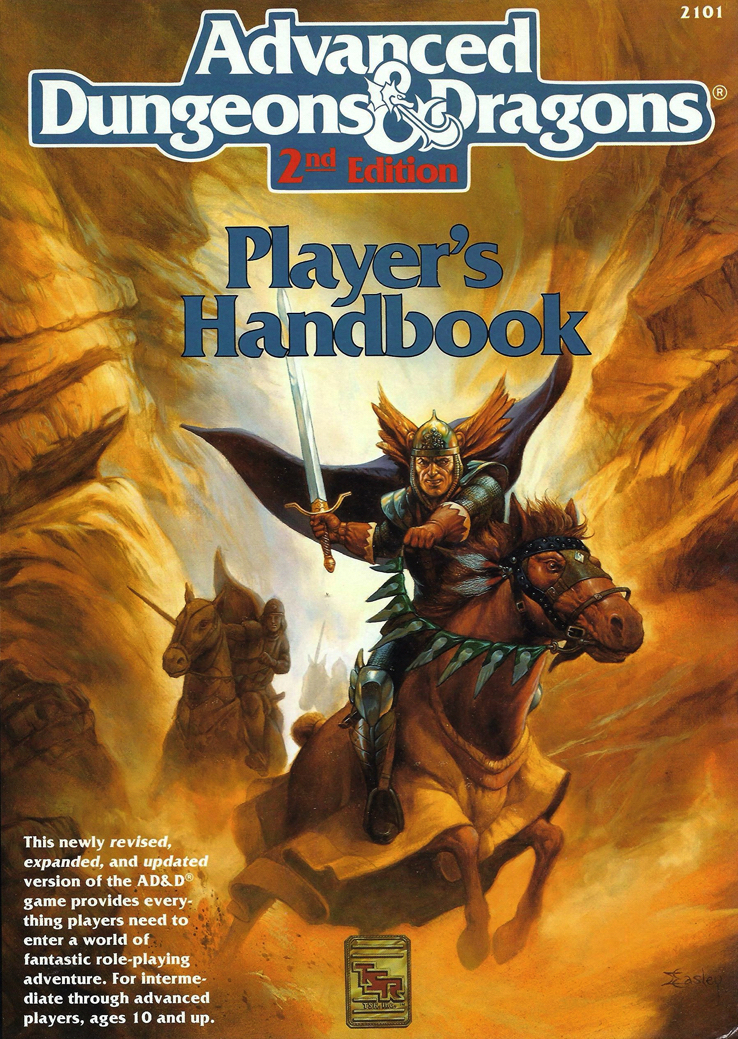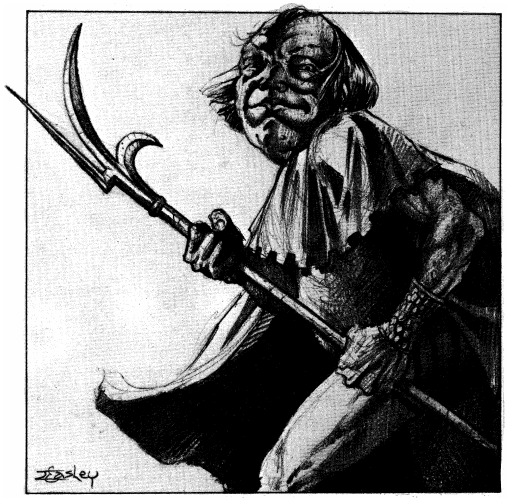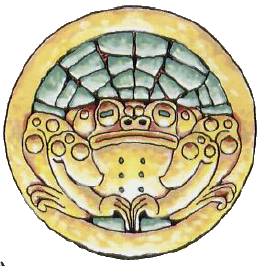Remembering 2E AD&D
I entered active duty in the U.S. Army on July 12, 1985, about a month and a half after I graduated high school. While stationed at Fort Bragg, North Carolina, I gamed regularly with two different groups, usually in civilian domiciles. Of course, there were soldiers in those groups, but our hosts were not always military. Wayne’s group alternated from his house and Marty’s house. Marty was a supply sergeant somewhere in the 82nd Airborne; I forget which unit. The other group met at Lewis’s house. This particular Lewis was Lewis Pulsipher, game designer and author of early Dragon articles as well as the Fiend Folio stats for the Princes of Elemental Evil.
With Wayne’s group, we varied our gaming diet. I don’t recall AD&D often being on the menu. We played Traveller, Champions, and DC Heroes. Those I remember. Lewis’s group had a steady diet of AD&D, all 1E because that’s what was available for AD&D back then. I remained at Fort Bragg for about four years and then re-enlisted.

My next duty station was Schofield Barracks, Hawaii, and I arrived there roundabout the fall of 1989. Shortly after, I found a new gaming group that met in Ron’s on-base housing. Ron was an Air Force guy, and this new gaming group was all military. They introduced me to 2E AD&D, although we did brief forays in other game systems, such as Torg, Rifts, DC Heroes, and Stormbringer.
I didn’t touch 3E D&D until years after my honorable discharge in January 1993. Back in Houston, Texas, I started gaming again with a few friends who I’d gamed with in junior high and high school. I switched to 3E D&D not long after it was published. Before that, we still mostly played 2E AD&D. I made the switch because my good friend Fred insisted. He DMed The Sunless Citadel as our first adventure. My character was a half-orc barbarian.
Along the way to 3E D&D (and after), new gamers were met. Most of them didn’t make the cut, but two of them I still game with regularly. My good friend Fred, whom I met in junior high, died from an aneurysm several years ago. Ben, whom I gamed with in high school, got married and vanished. No one I game with today is someone I gamed with way back circa 1978 after I found a Basic D&D book in a desk at school.
Over the past couple of weeks, I’ve pulled out my 2E AD&D stuff. It’s still a great game, with better mechanics, I think, than 1E AD&D, which is itself a great game. I’ve typed up about 20 pages of notes for a 2E AD&D player’s guide for a campaign that starts in a frontier area centered on Tanelorn Keep. While piecing together the player’s guide — tweaking this race, modifying that class, importing this idea from that other game, system, et cetera — I’ve remembered why I enjoyed 2E AD&D so much for about a decade.
And, just so it doesn’t seem like this post is nothing but a grognard grognarding, here’s an excerpt from the Tanelorn Keep Player’s Guide:
Dwarves
Moradin Forge-Lord carved the first dwarves from stones and forged their souls on the Dread Anvil. During the Second Age, dwarven culture reached its pinnacle. The dwarves expanded to the westward across the Duna, driving the elves from their cities and liberating the humans whom the elves had ruled. Dwarves built and controlled the most powerful cities, crafting an empire that radiated out from Ironspyre, the mightiest dwarven mountain home.
Dwarven hegemony shattered during the Gargarizein, when gargoyles erupted from Elemental Earth into the Deeps of several major dwarven strongholds. Thousands of dwarves died defending their domains. Thousands more abandoned their homes when it became clear that hope was lost.
Today, dwarves are uncommon. The surviving clans have scattered, forming enclaves in a handful of cities along the Duna, the great river that separates the western lands from plains beneath the Sundered Chain, that range of mountains that was once the backbone of dwarven military and political power. Within these enclaves, dwarven guilds dominate all aspects of metalworking while the scions of once-great clans dream of reclaiming their ancient mountain halls.


